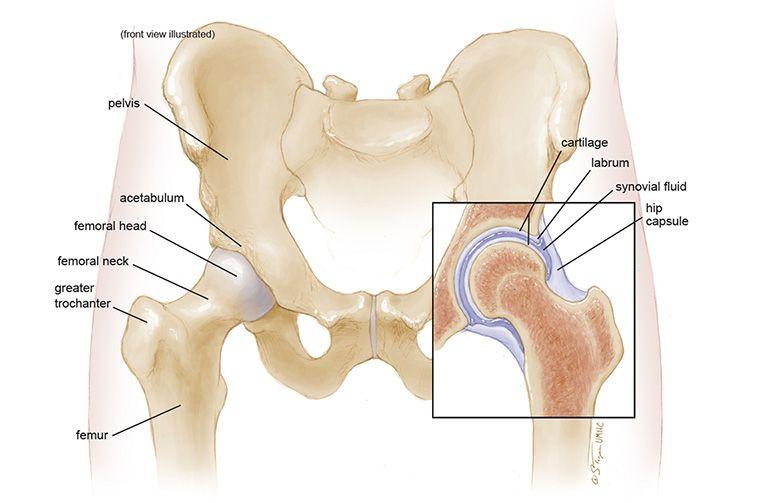Hip Anatomy

Overview
The hip is a pivotal element within our musculoskeletal system, performing essential functions such as supporting the body weight and facilitating movement and stability. It is a ball-and-socket joint, and is comprised of two main parts: the hip bone (also known as the pelvis) and the femur (long bone of the thigh).
Types
There are no subtypes of hip anatomy. However, there are various structures that make up the hip joint. These include:
-
- The Acetabulum: This is the socket within the hip bone that houses the femoral head (ball).
-
- Femoral Head and Neck: The ball-shaped end of the femur (thigh bone) that fits into the acetabulum.
-
- Cartilage: The soft tissue that covers the surfaces of the bones within the joint, allowing for smooth and frictionless movement.
-
- Ligaments: Bands of tissue that connect bones together, providing stability to the hip joint.
-
- Muscles and Tendons: These structures work together to facilitate movement.
Causes
Although the natural process of aging can wear the hip joint over time (known as osteoarthritis), several other factors may contribute to hip problems. This includes injury or trauma, inflammatory diseases such as rheumatoid arthritis and hip dysplasia, a condition present from birth where the hip joint doesn’t develop properly. Certain lifestyle factors such as sedentary behaviour and obesity could also put the hip joint under strain.
Symptoms
Pain in and around the hip area is the most common symptom related to hip problems. It may manifest as a constant dull ache, a sharp pain during movement, or tenderness when touched. Other indications may include limited range of movement, stiffness in the hip or the knee, swelling and/or warmth around the hip, and a limp or altered walking pattern.
Diagnosis
Doctors typically rely on a mix of physical examinations, medical history, and imaging tests to diagnose hip problems. During the physical examination, your doctor may check your hip for tenderness, range of motion, and strength. Imaging tests such as X-rays, MRIs, CT scans, and Ultrasounds could provide a detailed view of the hip joint and help to assess the extent of any damage.
Treatment Options
Treatment options for hip problems typically depend on the cause and severity of the symptoms. Conservative approaches may involve physiotherapy, pain management with over-the-counter or prescription drugs, weight loss, and lifestyle changes. Severe cases, however, might require surgical intervention such as hip arthroscopy, hip resurfacing, or total hip replacement.
Living With Hip Anatomy
Understanding your hip anatomy and the underlying cause of your problem can help in managing symptoms effectively. Regular, gentle exercise can help maintain strength and flexibility. Weight management may reduce pressure on the hip joint, and using assistive devices such as walking aids can help improve mobility. A diet rich in calcium and vitamin D can also support bone health in the hip.
When to Seek Help
While some amount of hip discomfort is common, particularly as we age, certain symptoms should prompt you to seek immediate medical attention. If you are experiencing severe or persistent pain, swelling and redness in the hip, or if you notice a sudden inability to move or bear weight on your hip, it’s important to consult a medical professional as soon as possible. These could be signs of more serious conditions such as a hip fracture or a joint infection.
